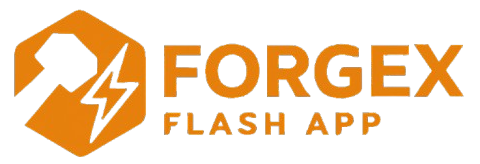When building or testing crypto wallets and blockchain applications, especially those using Tether (USDT) on the TRC20 network, developers often need a reliable way to simulate transactions without risking real tokens. A flash USDT to TRC20 wallet tool provides exactly that—a secure and efficient method for simulating transactions in a closed environment.
This blog post explains how to safely use flash USDT tools to simulate TRC20 wallet behavior for testing, UI validation, and educational demonstrations.
What Does It Mean to Flash USDT to a TRC20 Wallet?
Flashing USDT to a TRC20 wallet means generating the appearance of a Tether transaction on the TRON blockchain without sending actual funds or broadcasting to the network. This is a simulation used for testing purposes and has no real blockchain effect.
It allows teams to:
- Simulate wallet activity and balance changes
- Mimic incoming transactions
- Test how interfaces handle USDT deposits
- Train users in a risk-free environment
Who Needs This?
1. Developers
Test and refine USDT-TRC20 transaction handling, including pending states, wallet refresh behavior, and balance logic.
2. Product Teams
Simulate real-time wallet activity during app demos and internal reviews.
3. QA Engineers
Run test cases for wallet behavior under simulated deposit conditions, without using live funds.
4. Crypto Trainers and Educators
Use flash tools to walk students through the basics of receiving USDT on the TRON network.
Key Features of a Flash USDT to TRC20 Wallet Tool
- Simulated TRC20 USDT transfers
- Custom wallet address and amount fields
- Instant transaction generation with mock TXIDs and timestamps
- Offline support or isolated test environments
- No TRON gas fees or token usage
- No interaction with public blockchain nodes
Advantages
- No need for real USDT or TRON wallet funding
- Faster testing with full control over transaction variables
- No risk of accidental transfers or financial loss
- Improved interface testing for accuracy and responsiveness
- Ideal for teaching transaction flows without technical barriers
Safe and Ethical Usage
The flash USDT simulation tool must be used only for legal and ethical purposes, such as:
- Software development
- UI/UX testing
- Internal demos
- Training sessions
It should never be used to:
- Mislead users or simulate real balances in production
- Impersonate valid transactions
- Commit fraud or bypass blockchain verification
Always make it clear that the transaction is simulated and restrict use to non-production environments.
How to Use It
- Launch the simulation tool in your test or demo environment.
- Input the destination TRC20 wallet address and a mock USDT amount.
- Generate the transaction to reflect an incoming transfer in the wallet UI.
- Observe how the interface reacts—confirm balances, transaction logs, and visual updates.
- Use outputs to verify logic or guide students during training.
Conclusion
Flashing USDT to a TRC20 wallet safely using simulation tools is a practical solution for any team developing, testing, or teaching blockchain systems. It allows for full control over transaction flows, balance behavior, and interface validation without real token involvement.
By using these tools responsibly, teams can create secure, accurate, and efficient environments for building better crypto products and educating users about Tether on the TRON network.


